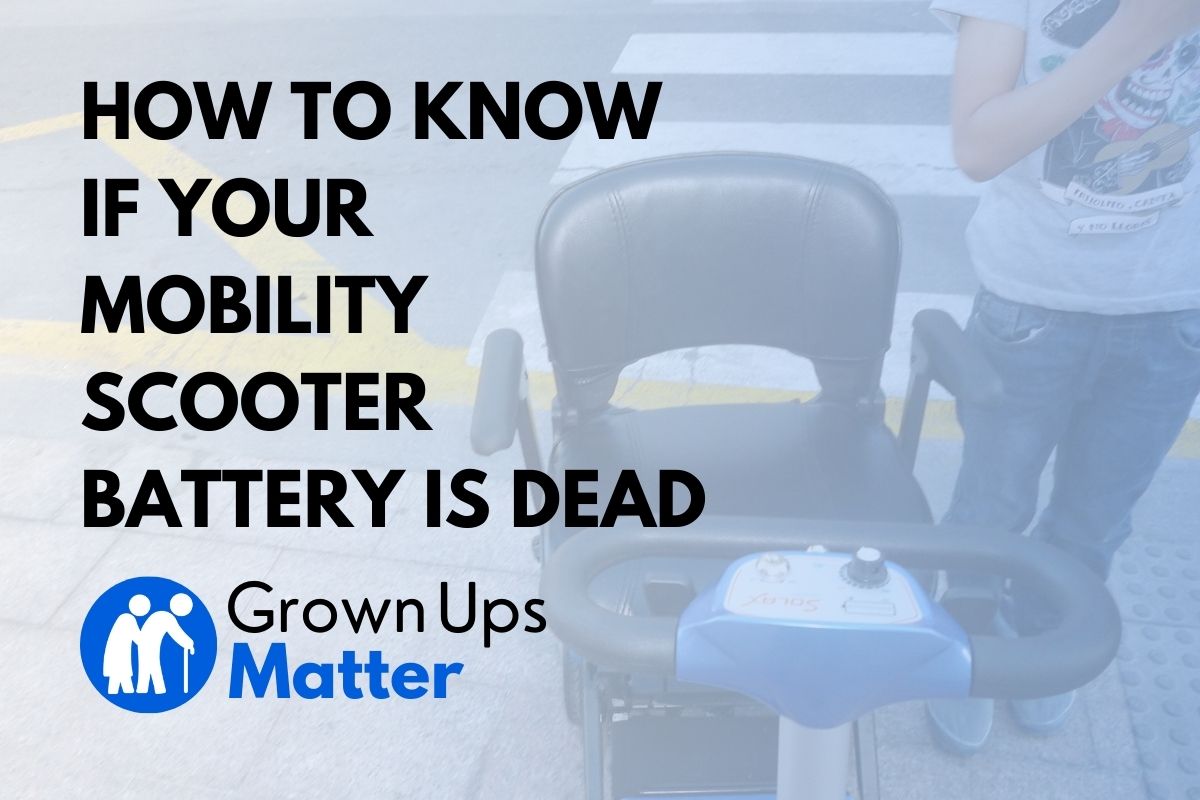Mobility scooters are a great way to enhance mobility and independence for people who have difficulty walking.
However, just like many other vehicles, mobility scooters rely on a battery to power them.
If your mobility scooter battery is dead, it can leave you stranded and unable to move around freely.
Knowing how to identify if your mobility scooter battery is dead is crucial in preventing these situations from happening.
In this article, we will guide you through the process of identifying if your mobility scooter battery is dead.
We’ll break down the key signs to look for, as well as some common causes of battery failure.
We’ll also provide you with some practical takeaways to help you maintain and extend the life of your mobility scooter battery.
With this information, you can be sure that you’ll never be caught off guard by a dead battery and can continue to enjoy the freedom and independence that your mobility scooter provides.
Key Takeaways:
- Mobility scooters rely on a battery to power them, and if the battery is dead, it can leave you stranded and unable to move around freely.
- There are several signs that your mobility scooter battery is dead, including a drop in performance, sudden cuts in power, a falling battery gauge, a battery indicator showing full charge after a short charge, quick dropping of the battery clock, battery overheating, signs of leakage, and the battery reaching the end of its life cycle.
- Regular checks and maintenance can help extend the life of your mobility scooter battery.
- If your scooter’s battery is dead and needs to be replaced, a new battery pack will cost around $200, and it can be replaced by a technician or by yourself if you have the necessary strength and dexterity in your arms.
- There are several alternatives to get your mobility scooter repaired or battery replaced, including specialized workshops, durable medical equipment retailers, and DIY solutions.
7 Signs Your Scooter Battery Is Dead
If you are wondering whether your mobility scooter’s battery might be worn out, you have probably noticed any of these common signs.
1. Performance Drops
One of the most obvious signs that your battery is dead is a noticeable drop in performance.
You might notice that your scooter is not as powerful as it used to be, and it might take longer to get up to speed.
There can also be sudden cuts in power, or issues when turning it on.
2. Battery Gauge Falling Abruptly When You Accelerate
Another sign that your battery is on its way out is if you notice the battery gauge falling suddenly when you accelerate.
This is a sign that the battery is struggling to keep up with the demands of the motor.
Battery indicators on scooters are voltage meters, and heavy drops in voltage output when the device is accelerated might mean that the battery is worn out.
3. Scooter Indicator Showing Full Charge After Short Charge
If you left your scooter charging, and it shows a full charge after a short time, it might be a sign that the battery is no longer able to hold a charge, or that its maximum capacity has been greatly reduced.
4. Battery Clock Dropping Quickly
Another sign that your battery is dead is if the battery clock drops quickly, even when driving it at a slow steady pace on a flat road.
This indicates that the battery is losing its charge rapidly.
5. Battery Overheats Considerably
Although some heat is normal, if your battery is overheating when you use the scooter, it is a sign that it is not functioning properly.
This would be especially noticeable if you are not performing any demanding tasks on the vehicle and it still heats up.
Overheating can damage the battery and even pose a risk of fire.
6. Signs of Leakage
If you notice any signs of leakage, such as a sticky or wet substance around the battery, it is a sign that the battery is damaged and needs to be replaced.
Try to not touch any substances you find, since they might be toxic.
7. Battery Has Reached The End of Its Life Cycle
Finally, if you have been using your scooter for a long time and the battery has never been replaced, it is possible that the battery has simply reached the end of its life cycle.
Mobility scooter batteries on devices that are used regularly tend to last for about 12 to 18 months.
If you notice any of these signs, it is important to have your scooter battery checked by a professional.
A dead battery can leave you stranded, so it’s always best to be proactive and replace the battery before it fails completely.
How to Check a Mobility Scooter Battery?
Although some signs of a battery decaying are evident, and you will notice them with the everyday use of your device, there are certain checks you can do to measure your battery’s condition.
In this guide we go over the most common ones:
What to Do if Your Scooter’s Battery is Dead?
Unfortunately, if you have determined that your scooter’s battery has reached the end of its usable life, there are not many alternatives other than replacing it.
Although some technicians might be able to refurbish them, the most common and cost-effective solution is to get a new set of batteries.
A fresh battery pack for your scooter, including the cost of a technician replacing them, will cost you around $200
Can You Replace Mobility Scooter Batteries on Your Own?
You absolutely can replace the batteries of your scooter by yourself if you are an able-bodied person with enough strength and dexterity in your arms.
Here’s an article where we discuss the operation and the steps to do so:
Where can You Get Your Device Repaired?
Luckily, there are many alternatives to get your scooter repaired or the battery replaced, from specialized workshops to durable medical equipment retailers, to DIY solutions.
We cover them all in this post:
All the claims made in this article are only for informational purposes, based on the writer’s experience and not clinical advice. You should always consult your physician or physical therapist if you have any doubts about how this applies to your specific case.

Rami is an economist with a passion for personal finance and a desire to help people make the most of their retirement years. He’s also the tech mind that made all of this possible, and a marketing enthusiast. In his articles, Ramiro offers real-life advice and resources for seniors looking to manage their finances and make the most of their retirement savings. He is dedicated to helping his readers live comfortably and securely during their golden years.

